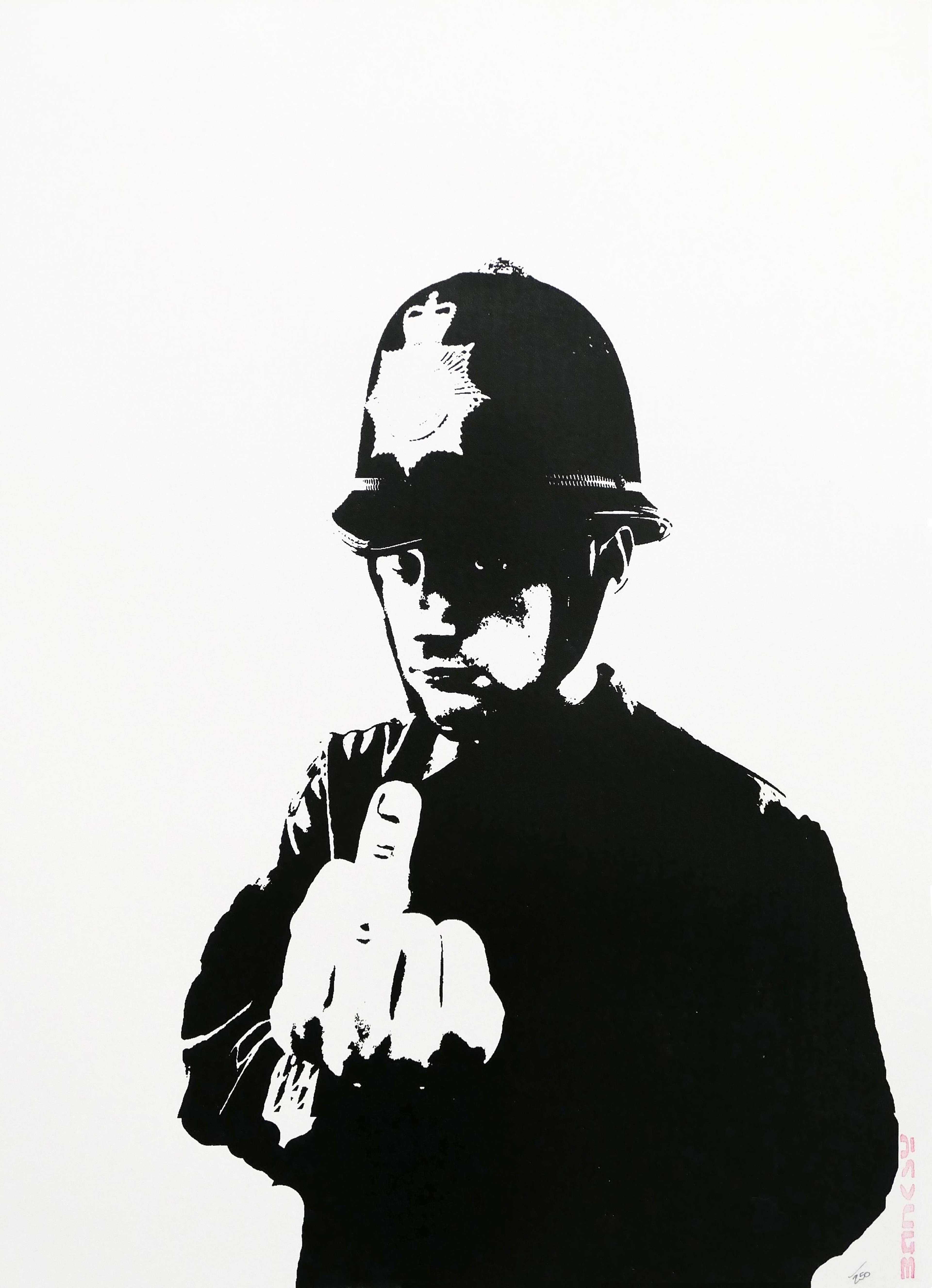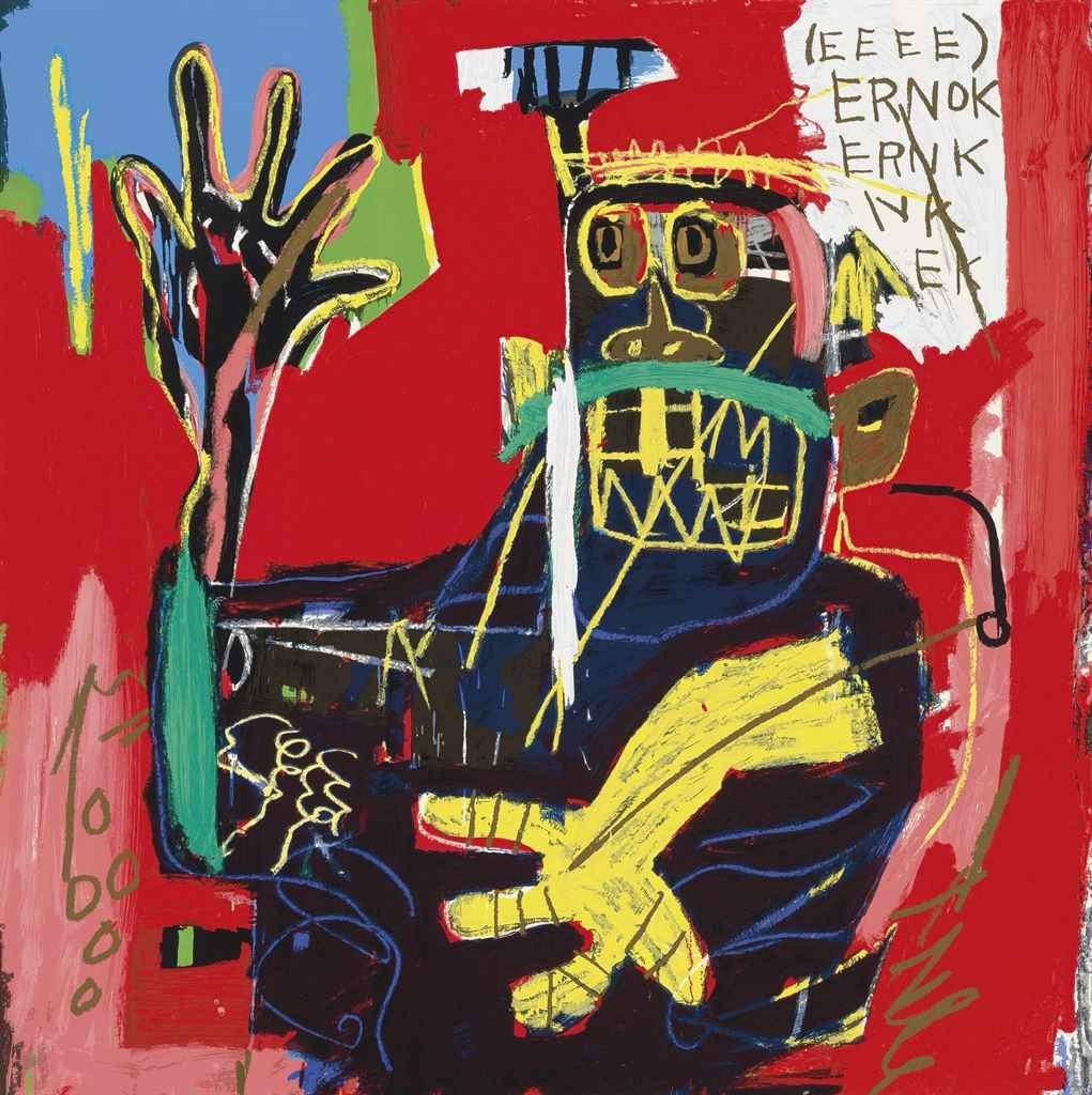What To Do If You Buy a Fake Artwork or Suspect Your Artwork is Fake

 Morons (LA Edition, white) © Banksy 2007
Morons (LA Edition, white) © Banksy 2007Live TradingFloor
Key Takeaways
Navigating the complex secondary art market can be daunting, especially with the rising sophistication of counterfeit artworks. This article provides essential guidance for art collectors on identifying and addressing potential art fraud. From understanding initial steps to verify authenticity through documentation, to utilising scientific methods for detection and knowing your legal rights if a fake is purchased, this comprehensive guide equips collectors with the knowledge to protect their investments. By conducting thorough due diligence and building relationships with reputable experts and dealers, collectors can safeguard their collections against the potential forgery.
Due to the vastness and complexity of the secondary art market, the prevalence of fake prints is an unfortunate reality. In the early 2000s, the ubiquity of fake Banksy prints being sold on Ebay resulted in the artist creating his own authentication board in 2008, Pest Control, to certify his work. Even seasoned art collectors can be subject to deception, so if you suspect your artwork is fake, understanding how to address and resolve issues of counterfeit art is essential.
The fakes market is becoming increasingly sophisticated, with the former director of the Metropolitan Museum of Art estimating 40% of art on the market to be fake. Therefore, knowing how to spot forgery, from comprehensively checking documentation to consulting an expert, is crucial for those looking to purchase artwork and protect themselves from fraud.
Initial Steps to Take if You Suspect Your Artwork is Fake
Stay Calm and Assess the Situation
Suspecting the print you have just purchased is a fake can be distressing, however it is important to stay calm and take a measured approach to resolving the issue. Assessing the situation by reviewing every piece of associated documentation is a crucial first step to take. Gathering certificates of authenticity, purchase receipts, and previous appraisal reports will help determine provenance, which can provide vital clues surrounding the legitimacy of your work.
Review Documentation and Provenance
It is important that buyers and collectors do their due diligence, and any missing paperwork should be an immediate redflag. Not rushing into a transaction and conducting meticulous research into the artist can help to avoid any unpleasant surprises. This can be done by familiarising yourself with the artist’s catalogue raisonné, if your desired print is not in the catalogue, it can be a warning red flag. Furthermore, knowing the artist’s signature, the medium they usually work in, and specific edition dimensions will also aid in spotting any inconsistencies.
Provenance: Your Cheapest Insurance
Strong provenance isn’t just about peace of mind - it’s a powerful lever for value. A missing certificate, a vague invoice, or a gap in ownership history can stall a sale or devalue a work entirely. Provenance is, in effect, your cheapest insurance - protecting your asset’s integrity and ensuring market confidence. In the eyes of a buyer or auction house, a watertight paper trail not only proves authenticity - it lifts prices and speeds up deals.
If your documentation is patchy, it’s not too late. Gaps can often be repaired by tracing the chain of ownership, sourcing historic gallery records, or contacting original sellers. Dealers, galleries and trusted platforms like MyArtBroker can help bridge these gaps with verified records or industry contacts. When in doubt, write everything down - in a market where trust is everything, paperwork is currency.
Consulting Art Experts
Finding Qualified Art Appraisers and Authenticators
No matter how thoroughly you check the veracity of a print’s provenance and documents, if you suspect foul play, it is crucial that you confirm your suspicions by seeking expertise. Qualified art appraisers or authenticators can determine a print’s authenticity by conducting detailed examinations of the artwork, using specialist visual inspection and scientific testing methods.
How MyArtBroker Can Help
Ensuring these experts are reputable is important for a comprehensive appraisal and it is recommended to enlist the help of trusted specialist platforms. MyArtBroker is a dependable option, and offers access to a trusted network of third-party experts, as well as free, impartial advice to clients to ensure a successful transaction.
“We can look into the provenance of a piece and if we suspect it to be genuine we can have the artwork unframed to check the print for stamp marks, or publisher marks. We can also compare signatures to those of authentic works, and lean on our own network of authenticators, for example Richard Polsky for the Warhol market. MyArtBroker has an awareness of the market, where fakes are and where they are usually bought, so it enables us to map provenance.”
- Jasper Tordoff, Specialist at MyArtBroker
Art Prints & Editions Verification Methods
Scientific Testing and Analysis
Although art forgeries are becoming more sophisticated, so are the methods of discovering them. Scientific methods such as carbon dating, infrared spectroscopy, and X-ray fluorescence can be used to analyse and identify the materials used in the artwork. Often, forgeries are discovered when materials and methods outside of the print’s claimed period are used, providing objective evidence of fraud.
Expert Visual Examination
In addition to scientific testing, visual methods can reveal if a print is a fake. Tell-tale stylistic signs, including unusual signature placement, false labels, inconsistent colouring and incorrect dimensions, are useful clues to detecting fakes.
Legal Recourse if You Bought a Fake Artwork
Understanding Your Legal Rights
If you have bought a fake artwork, it is essential to understand your legal rights and options. Navigating the complexities of art fraud can be daunting, and depending on the circumstances, you may be entitled to a refund or compensation. Therefore, consulting a specialist legal professional is recommended, as legal recourse may involve filing a lawsuit for fraud or breach of contract, and reporting the issue to relevant authorities.
Preventing Future Issues
Due Diligence Before Purchasing
To avoid purchasing fake artwork in the future, buyers and collectors must practise thorough due diligence. Meticulously researching the seller, verifying the provenance, checking accompanying documentation and seeking multiple opinions from trusted experts, will aid in confidently navigating avoidable issues.
Building a Network of Trusted Experts
Furthermore, establishing solid relationships with reputable dealers, galleries and knowledgeable professionals will ensure your transactions are verified, and will aid in the safeguarding of future acquisitions.
“The main thing is to do lots of homework, do your due diligence. This involves knowing the company inside and out, and you’ll want to speak to an expert in the field, particularly in markets like the Warhol market, where lots of incorrect works are in circulation. If the deal is too good to be true, it most commonly is.”
- Jasper Tordoff, Specialist at MyArtBroker
Art Fraud Issues
“If you look at an artist like Banksy, he is so clean-cut because he established Pest Control, which is his own authentication board, that made it much easier. Instead of debating the provenance of a piece, it was either a yes or no answer”
- Jasper Tordoff, Specialist at MyArtBroker
Unfortunately, contemporary examples of high-profile fakes are not unusual, and highlight the prevalence of fake artworks. A recent reminder of this is the Jean-Michel Basquiat forgery scandal at the Orlando Museum of Art.
The cardboard artworks, purportedly created by Basquiat in 1982, were put on display at the Orlando Museum of Art for the Heroes and Monsters exhibit in 2022. Suspicions surrounding the artworks' provenance were already circulating, with the supposed previous owner declaring to the FBI that he had never met the artist or purchased his work. On later examination, it was discovered that one of the works was painted onto the back of a FedEx shipping box, displaying a label that had only come into circulation in 1994, six years after Basquiat’s death. The serious implications of these counterfeit works brings to light the challenges the art world faces when verifying ‘undiscovered’ masterpieces, and is a pertinent reminder of the responsibilities buyers, collectors and galleries have when purchasing historic works.
Protecting Yourself from Art Fraud
As the secondary art market grows in value and complexity, protecting yourself and your investments from fraud necessitates informed and proactive measures. Conducting thorough independent research, collaborating with reputable experts, and maintaining comprehensive documentation helps to combat fraudulent purchases and ensures the integrity of your collection. By staying vigilant, you can safeguard your assets and stay informed for future purchases.







